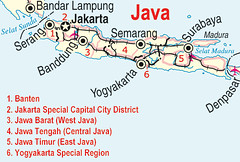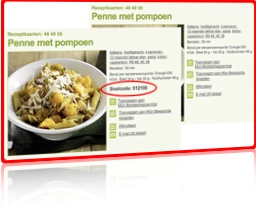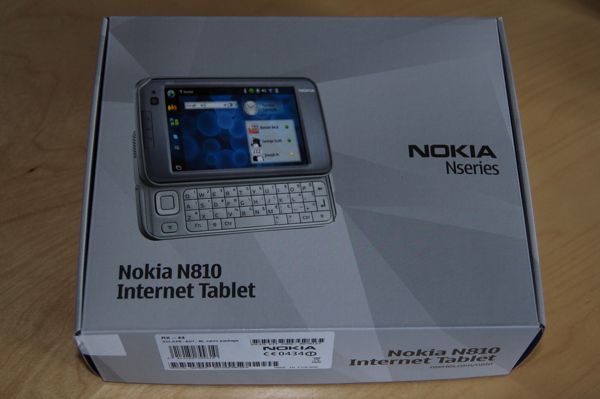Categorie: Hacking
-
En ook certificaat nummer twee is binnen!
Lees verderSinds vanmorgen mag ik mijzelf na Sun Certified Java Programmer ook Sun Certified Web Component Developer noemen! Met andere woorden, ik heb Sun overtuigd dat ik weet wat servlets zijn, hoe ik daarin met sessies en cookies moet omgaan, hoe ik filters kan toepassen, hoe ik dat alles in Tomcat kan deployen en nog een paar andere nuttige feitjes.
 In het kader van “leer elk jaar een nieuwe programmeertaal” denk ik
dat 2009 hiermee voor mij het Java-jaar was.
In het kader van “leer elk jaar een nieuwe programmeertaal” denk ik
dat 2009 hiermee voor mij het Java-jaar was.In 2010 ga ik mij wagen aan het illustere Objective-C, de taal achter Mac OS X applicaties en iPhone apps. Eens zien hoe me dat vergaat.
Maar nu eerst even de overwinning vieren :-)
-
Sun Certified Java Programmer
Lees verderSCJP’er, zo mag ik me voortaan dus noemen. Tenminste, totdat ik mezelf ook SCWCD’er mag noemen, want dat is natuurlijk hipper.

Sun heeft bepaald dat ze mij best een certificaat wilden geven dat ik in Java kan programmeren. In ruil daarvoor moest ik wel nog even anderhalf uur door wat vragen klikken en de juiste antwoorden geven.
Inmiddels ben ik dus al aan SCWCD: Sun Certified Web Component Developer begonnen, waarin het draait om Servlets, JSPs, Containers, Filters en hoe die componenten samenwerken in een webserver.
-
Albert Heijn Recepten Greasemonkey-script
Lees verderAlbert Heijn’s recepten is een handige verzameling als je even niet weet wat je wilt gaan koken. Nu hebben ze heel handig, een snelcode om snel je recepten terug te kunnen vinden. Alleen maken ze die alleen zichtbaar als je het recept uitprint, anders is het verborgen.
 Met het
ah-recipe
Greasemonkey-script kan je je
browser dit laten fixen en dan krijg je gewoon de snelcode weer op je
scherm te zien.
Met het
ah-recipe
Greasemonkey-script kan je je
browser dit laten fixen en dan krijg je gewoon de snelcode weer op je
scherm te zien. -
NodeBox
Lees verderDank je Bram, voor het wijzen op NodeBox.
Ik was net op zoek naar een eenvoudige en snelle manier om wat plaatjes te genereren voor in m’n afstudeerverslag, was al bijna met Cairo aan de slag gegaan, toen Bram met NodeBox kwam en daar heb ik alweer heel wat uurtjes mee gespeeld zonder echt nuttig werk te hebben verricht…
NodeBox is a Mac OS X application that lets you create 2D visuals (static, animated or interactive) using Python programming code and export them as a PDF, an image or a Quicktime movie. NodeBox is free and well-documented.
Wiskunde ziet er soms best gaaf uit!
-
Nieuw speeltje!
Lees verderEindelijk aangekomen!

Maar nu moeten ze me bij Nokia toch even uitleggen sinds wanneer Duitsland, Zwitserland, Oostenrijk en Nederland in één regio zitten, want nu zit ik dus met een QWERTZ toetsenbord opgescheept (en ik denk dus ook iedereen die dit ding in Nederland in de winkel koopt)! Ach ja, alles went, dus hopelijk dit ook.
-
N810 maemo submission accepted
Lees verderOkay, joining the other 498 posters on Planet Maemo:
N810 maemo submission accepted
Congratulations! You have been accepted to the N810 maemo device program. We will send your discount and instructions as soon as the device is available in your selected shop (soon).Wheeee! Let’s find out how the N810 tastes with an Apple…
-
De Schijvenaer
Lees verderOver the last few months I spent some time on a website for a colleague of my father. They started a mini camping this year and wanted a nice website.
So I started off once again on a job I never wanted to do again: Creating a website for a broad public (i.e. mostly Internet Explorer users). Having had some annoying experiences two years ago with the Spacelabs RGE project, I almost swore never again to write a site with IE in mind. However, something changed in the last two years. It was not the browser, it was not the XHTML and CSS standards, it was me. Two years ago terms like “semantic HTML” were mostly unknown to me and sites were written in some form of XHTML abusing the beautiful table-tag.
Enter 2004 and the CSS Zen Garden which is a site demonstrating the possibilities of what can be achieved visually through CSS. The site exists in a multitude of CSS files, but only one single XHTML file, which is exactly the same for every single design.
One of the key requirements of a CSS to be accepted to CSS Zen Garden is that it has to work on “most” browsers, which of course includes Internet Explorer. The nice thing about that requirement is that the CSS files are thus compatible with most renderers (MSIE, Gecko and KHTML are the biggest right now, Opera usually also works); create your site in the same structure, and you’ll already have a mostly working version!
This is what I did with de site for Mini-Camping de Schijvenaer which works in all browsers, except for the image of the Schijvenaer. This is a little extra for non-IE users…
-
Pinpoint
Lees verderPinpoint is the name of my first real project of Nogates. It is a bowling (hence the Pin) score (hence the Point) management application written in the beautiful Ruby programming language.
It will feature multiple frontend interfaces, but will primarily be built upon GNOME2/Gtk+. Maybe a Cocoa frontend will also be created, if I manage to understand the RubyCocoa bindings.
The SVN version can be checked out using the command:
svn co http://nogates.nl/svn/pinpoint</code> -
Hackergotchi
Lees verderI’ve created a hackergotchi for myself, probably I needs some editing…

Now I just have to go and hack :-)
